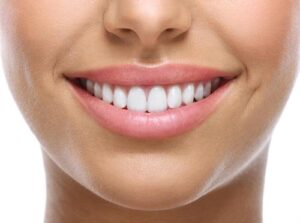Dental Bonding
 Dental bonding, commonly known as “tooth bonding,” is the process of repairing tiny chips and cracks in teeth with soft composite resin. The doctor may mould the composite resin into any form and polish it to any hue because of its malleability. Once the resin has been applied and the doctor is satisfied, they can use a light to “set” the bonding and harden it.
Dental bonding, commonly known as “tooth bonding,” is the process of repairing tiny chips and cracks in teeth with soft composite resin. The doctor may mould the composite resin into any form and polish it to any hue because of its malleability. Once the resin has been applied and the doctor is satisfied, they can use a light to “set” the bonding and harden it.
Bonding can be used to fix spacing issues and cracked teeth. Dental bonding is an excellent approach to repair a gap between teeth without the need of orthodontic procedures.
Dental bonding is often chosen by patients who have:
- A tooth with an intrinsic stain that doesn’t respond to whitening
- A chipped tooth
- Gaps between teeth
- Eroded enamel at the edge of a tooth
- A tooth that stands out from the others
- Receded gum tissue.
Adding tooth-colored material may often correct one or two misaligned teeth by improving their outward look. This procedure can be used to close spaces between teeth, rotate a protruding tooth, or simply whiten a discoloured area in the centre of a front tooth.
Bonding has a shorter lifespan than veneers, yet it may be the better option for a variety of reasons. One benefit of bonding is that it is less expensive and may be completed much more quickly (just one office visit). It is a temporary change to the teeth, though, and may be undone. Because a little portion of the patient’s tooth enamel needs to be resurfaced, once the patient receives veneers, they cannot be removed. Contrarily, bonding is completely reversible and doesn’t alter your natural teeth.
Benefits of Dental Bonding
Your dentist can fix aesthetic issues with dental resin using the dental bonding procedure. Using dental bonding, you may fix teeth that are discoloured, cracked, broken, malformed, or separated by ugly little gaps.
They are constructed of a unique resin that may be coloured to complement or contrast your natural tooth colour. Your dental bond is tailored to have a natural look after application. Dental bonding, as opposed to veneers and dental crowns, is a rapid technique that causes minimum damage to the original tooth structure.
Over your pre-existing dental enamel, dental bonding is applied. In order to guarantee that the bonding material adheres to the tooth, your dentist will first roughen up the enamel on the tooth’s surface with a roughing gel. After that, the tooth will be coated with a conditioning treatment. A resin colour that best complements your smile will be chosen by you and your dentist together. Following that, the tooth is coated with composite resin, which is then shaped. Your dentist will polish and buff the bond to give it a natural gloss once the moulding has dried and been solidified using a special ultraviolet light.
Dental bonding is an excellent choice for perfecting the appearance of stained or damaged teeth. Bonding can be used to repair a wide variety of cosmetic dental concerns:
- Repair chipped or cracked teeth
- Improve appearance of stained or discolored teeth
- Fill in large gaps between teeth
- Change the shape of teeth for a uniform appearance
- As a cosmetic alternative to amalgam fillings
